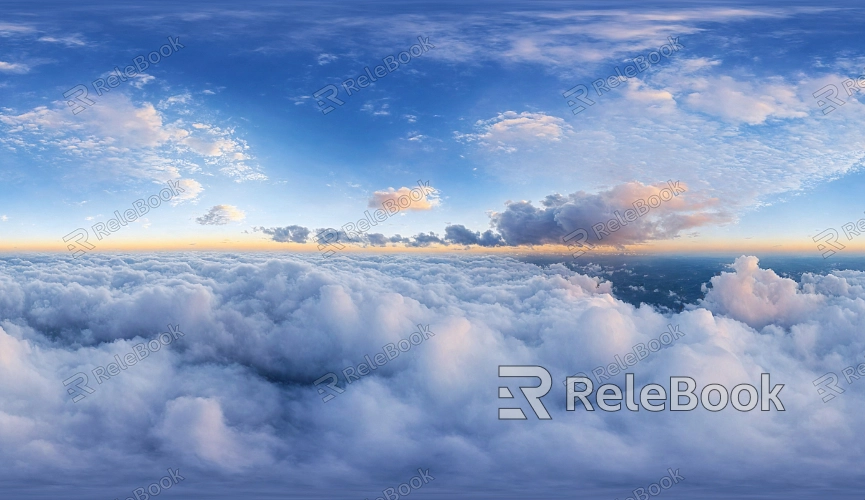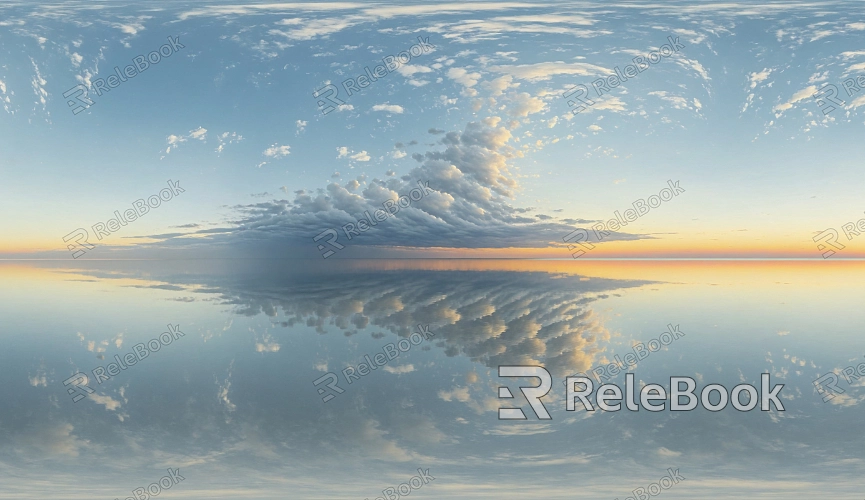How to Adjust the Brightness of Sky Texture HDR in Maya
HDR images are widely used in various 3D software like Maya, 3ds Max, and Blender because they capture a broader range of light information and details. In these programs, HDR textures not only serve as backgrounds but also significantly influence the lighting of the entire scene. Adjusting the brightness of HDR textures is essential for optimizing lighting effects and enhancing the realism of a scene. This article will guide you through the steps to adjust the brightness of sky texture HDR in Maya and provide practical tips to help you achieve the best results.

1. Import and Set Up HDR Textures
Before adjusting the brightness of an HDR image, the first step is to import the HDR texture into Maya. Here's how to do it:
Open the environment light texture settings, select the File node, and import the HDR image file you've prepared. HDR images are typically in .hdr or .exr formats.
Ensure the HDR file is applied to a skydome or other background object so it affects the entire scene's lighting.
Once the HDR image is imported, it becomes one of the primary light sources in the scene, and you can proceed to adjust its brightness accordingly.
2. Adjust Global Brightness Using Render Settings
Maya allows you to control global brightness through its render settings. Here's how to fine-tune it:
Go to the Render Settings and navigate to the lighting settings section.
Look for the Exposure Control option. Increasing the exposure will make the HDR image brighter, while lowering the exposure will darken it.
It’s important to balance the brightness of the HDR image with other light sources in the scene to ensure that the lighting remains consistent and realistic. By adjusting the global brightness, you create a solid foundation for further fine-tuning.
3. Use the File Node to Control Brightness
Maya's file node provides more control over the brightness of the HDR texture. Follow these steps:
Open the Attribute Editor and locate the file node of the imported HDR image.
In the file node, you'll find options like Color Gain and Color Offset. Adjusting the color gain increases or decreases the brightness, while the color offset can alter the overall tone of the image.
By making subtle tweaks to these parameters, you can finely control the brightness of the sky texture to suit your scene's needs.
4. Combine Physical Sky with HDR Textures
In some cases, you may want to combine Maya's Physical Sky system with HDR textures for more complex lighting effects. Here's how:
Open the physical sky settings and adjust the intensity of the light to ensure it doesn't overpower the HDR texture.
Balance the intensity of the sun with the brightness of the HDR texture to create a more natural lighting effect.
This combination not only enhances the realism of the lighting but also allows you to simulate different times of day, such as sunrise, noon, or sunset.

5. Fine-Tune with the Material Editor
Maya's Hypershade material editor offers advanced options for adjusting HDR brightness. Here's how to make more detailed adjustments:
Open the Hypershade editor and select the imported HDR file.
You can add a Color Correction node to the material network, allowing you to adjust the brightness, contrast, and hue of the HDR image.
Additionally, you can rotate the UV node to modify the direction of the HDR light source, simulating different sun angles.
These advanced adjustments give you greater flexibility, enabling you to fine-tune the HDR texture's appearance under various lighting conditions.
6. Enhance Lighting with Ambient Occlusion (AO)
Ambient Occlusion (AO) is a technique that enhances shadow detail, adding more realism to the lighting in your scene. You can combine AO with HDR textures for an improved effect:
Enable Ambient Occlusion in the render settings to generate more realistic shadows based on the HDR texture's light source.
Adjust the AO intensity and sample settings to further refine the shadow and lighting details in your scene.
The combination of HDR textures and AO creates a richer, more dynamic lighting effect, giving your scene greater depth and detail.
7. Preview Adjustments in Real Time
To ensure your HDR brightness adjustments are effective, Maya offers real-time preview features that allow you to see the results as you work:
Enable real-time renderers like Arnold or V-Ray, which support real-time feedback for HDR lighting adjustments.
With real-time preview, you can make changes to the HDR brightness without fully rendering the scene, allowing you to see the lighting effects instantly and make further refinements as needed.
This feature saves time and helps you maintain control over the final look of the scene.
8. Output High-Quality Render Results
After you've successfully adjusted the brightness of the HDR texture and optimized the scene's lighting, the final step is to render the scene at the highest quality:
In the render settings, choose an appropriate output format, such as PNG, JPEG, or EXR. If you want to preserve more lighting details for post-production, EXR is an excellent choice.
Ensure that the final output meets your project’s requirements and showcases the best lighting effects.
By following the steps outlined in this guide, you now have a solid understanding of how to adjust the brightness of sky texture HDR in Maya. Whether you're tweaking file nodes, combining physical sky, or leveraging advanced features in the material editor, these adjustments will help you achieve more realistic and detailed lighting effects in your scenes. If you're looking for high-quality HDR image resources or want to enhance the lighting in your projects, Relebook is an excellent place to explore. With a vast collection of HDR images, 3D textures, and models, Relebook can help you save time and improve the quality of your work.

